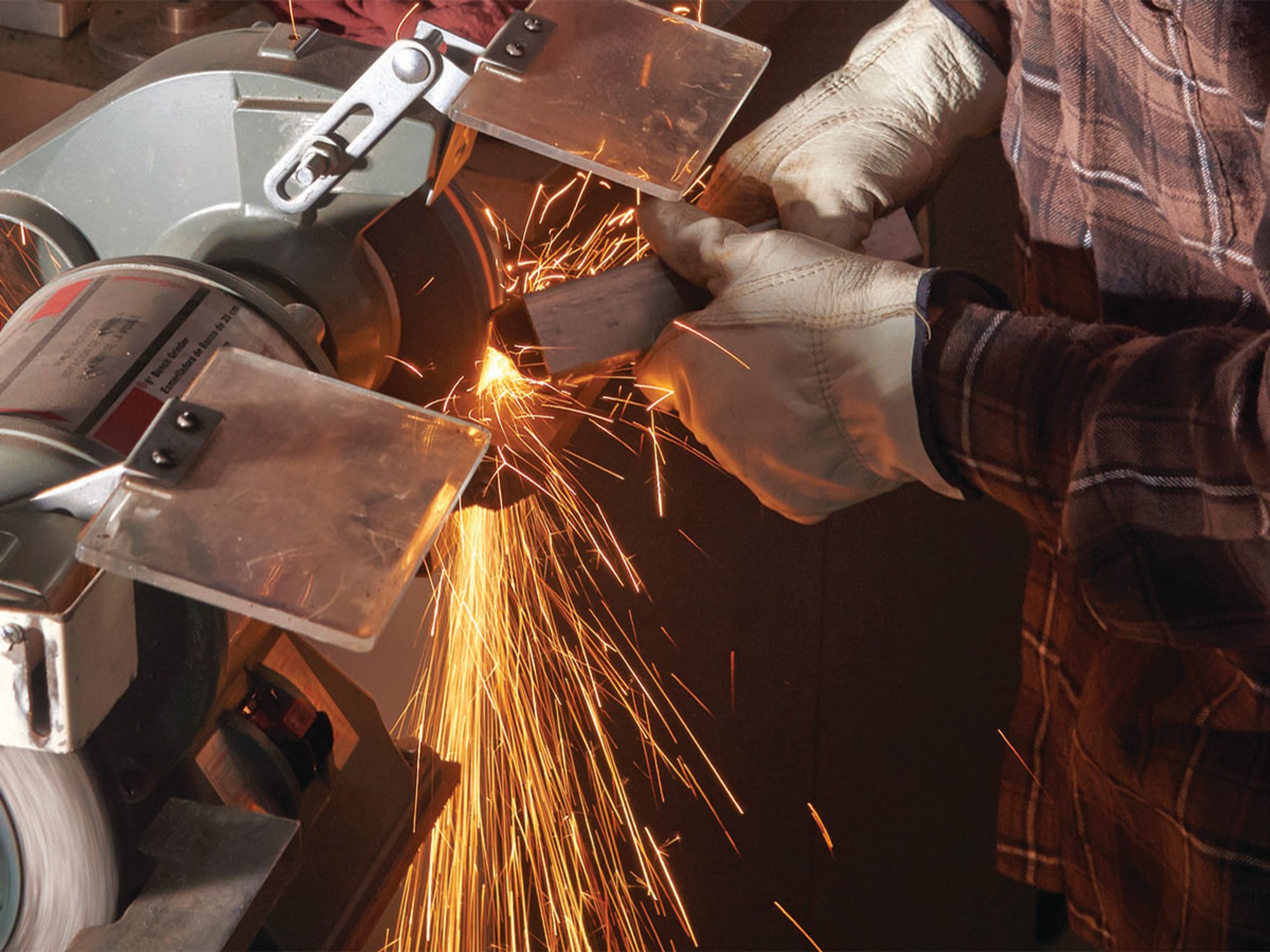Hazards of portable abrasive wheel tools

- Abrasive wheel tools may throw off flying fragments and should be equipped with guards.
- Wheels should be inspected for damage before use, to prevent disintegrating or exploding during start-up.
- Users should always wear eye and face protection.
Portable abrasive grinding, cutting, polishing, and wire buffing wheels create special safety problems because they may throw off flying fragments.
Abrasive wheel tools must be equipped with guards that:
- Cover the spindle end, nut, and flange projections;
- Maintain proper alignment with the wheel; and
- Do not exceed the strength of the fastenings.
Before an abrasive wheel is mounted, it must be inspected closely for damage and should be sound- or ring-tested to ensure that it is free from cracks or defects. To test, wheels should be tapped gently with a light, non-metallic instrument. If the wheels sound cracked or dead, they must not be used because they could fly apart in operation. A stable and undamaged wheel, when tapped, will give a clear metallic tone or “ring.”
To prevent an abrasive wheel from cracking, it must fit freely on the spindle. The spindle nut must be tightened enough to hold the wheel in place without distorting the flange. It is important to always follow the manufacturer’s recommendations. Users should take care to ensure that the spindle speed of the machine will not exceed the maximum operating speed marked on the wheel.
An abrasive wheel may disintegrate or explode during start-up. The user should allow the tool to come up to operating speed prior to grinding or cutting. Users should never stand in the plane of rotation of the wheel as it accelerates to full operating speed. Portable grinding tools need to be equipped with safety guards to protect workers not only from the moving wheel surface, but also from flying fragments in case of wheel breakage.
When using a powered grinder, workers should:
- Always use eye or face protection.
- Turn off the power when the tool is not in use.
- Never clamp a hand-held grinder in a vise.
